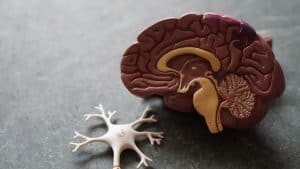
Body’s natural defence mechanism against TB discovered
pharmafile | May 11, 2017 | News story | Research and Development | Francis Crick Institute, TB, tuberculosis
Research conducted by the Francis Crick Institute has revealed how the body protects itself from Mycobacterium tuberculosis, the bacterium responsible for TB, potentially opening up new avenues to combat the disease.
The natural method of combatting TB has been found to be at least partially dependent on immune cells known as macrophages. The immune cells surround the TB bacteria, before phagosomes are able to engulf and unleash enzymes to break down the bacterium.
Researchers found that the TB bacteria are able to defend themselves by puncturing a hole through phagosome membranes before entering the cell to feed on the contents.
Through imaging the process, the research team were able to identify a mechanism that is able to combat this process. It relies on a protein known as Rab20, which is able to signal to reinforce the cell membrane of the phagosomes – locking the bacteria inside membrane sacs before delivering antibacterial components.
Macrophages (shown with blue nuclei) trap tuberculosis bacteria inside both tight and spacious phagosomes (red rings). Image: Laura Schnettger, Francis Crick Institute
“A very high proportion of people that are likely exposed to M. tuberculosis, are able to clear the infection without developing full-blown TB,” says Maximiliano Gutierrez, Group Leader at the Francis Crick Institute, who led the study. “It is possible that the body’s natural mechanism to enlarge phagosomes plays a part in this…The capture and escape of M. tuberculosis in cells is a highly dynamic process, so the only way you can understand what is going on is to image cells in real time at very high resolution. We are one of the few labs in the world that can perform long-term live cell imaging at sub-cellular resolution with the safety infrastructure required to work with a life-threatening bacterium.”
The hope is that learning more about the body’s natural form of combatting the bacteria could lead to ways of artificially boosting its defences. When combined with traditional therapies, this could create a two-pronged attack that may aid in cases where the bacteria are particularly resistant to standard treatments.
The discovery is particularly important as cases of the TB bacteria being resistant to standard forms of treatment have been spiking in recent years. Both Russia and India have recently been struggling to eradicate the disease, as drug resistance begins to rise. A recent study suggests that drug-resistant TB cases could become as prevalent as making up 1 in 10 cases of TB in India by 2040.
Ben Hargreaves
Related Content

BATM develops molecular diagnostics test for tuberculosis
BATM have announced that it has developed a new method for the rapid and comprehensive …

Johnson & Johnson cuts price of anti-TB medicine in poorer countries
Johnson & Johnson have announced that it will cut the price of its tuberculosis drug …

GSK’s tuberculosis vaccine shows efficacy over three years in HIV negative patients
Promising results have been revealed from a GlaxoSmithKline study, conducted in partnership with non-profit scientific …









